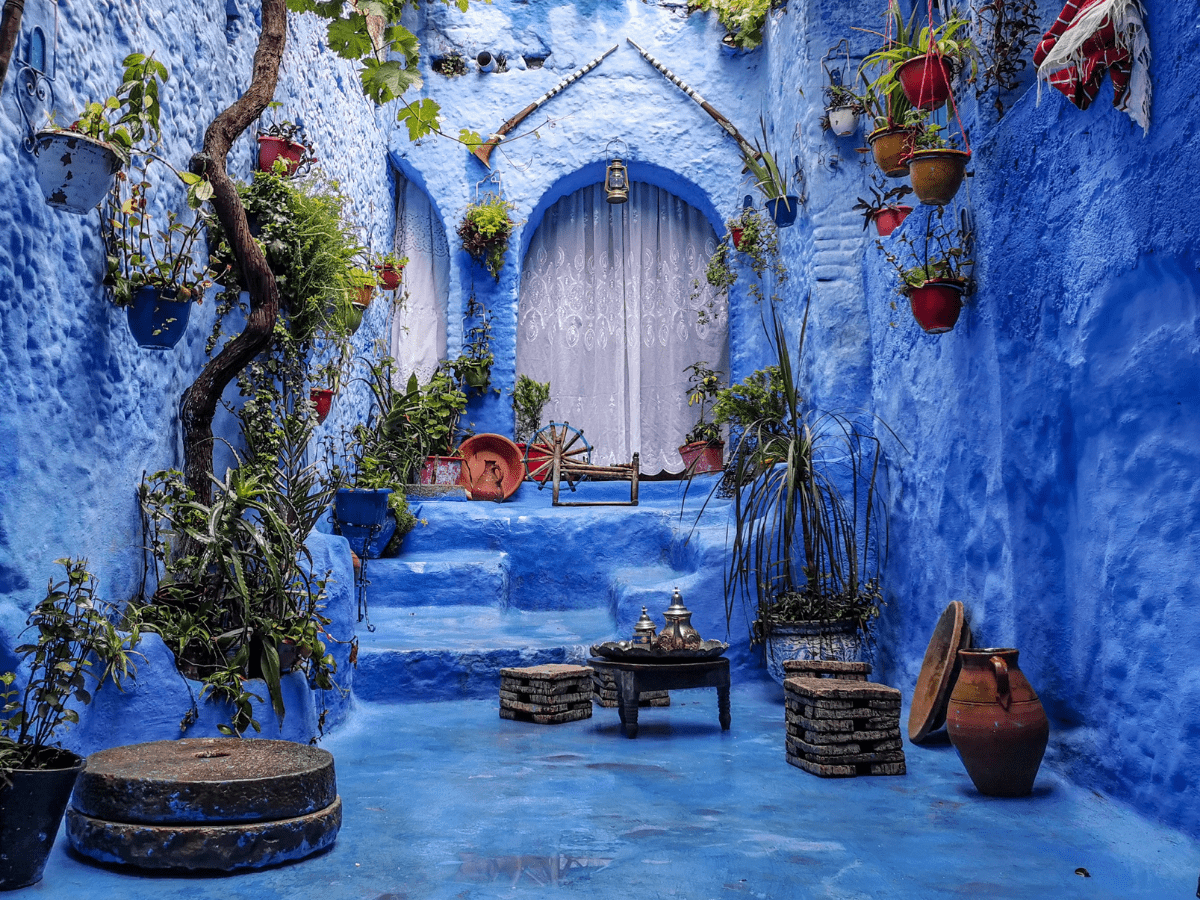
Covid-19 and Cannabis: A Farming Story. – Latest cannabis news today
Covid-19 has affected cannabis culture in strange ways. In Morocco, stoners have spread the rumor of an authentic cannabis tour. As the world’s largest cannabis producer, we flew to Morocco to investigate this rumor.
My friend Marco and I wandered through the blue city of Chefchaouen before reaching our hotel in the main square. A delicious smell of hashish – cannabis resin – wafted in the lobby. The clerk, a teenager named Hakim, took our passports to check in. When I stayed with Hakim, Marco went on a voyage of discovery. He came back from the terrace with a big smile. Marco had found a cube-sized piece of hash that was left over on the patio table! In the Chefchaouen region, cannabis was as common as tagine or mint tea. Hakim gave us the key and returned to his patio chair, where he lit a big joint. We asked him about the cannabis tour.
El Kalaa is a lost hamlet north of Chefchaouen where local farmers grow cannabis. The legalization debate started with Covid-19 in Morocco and Parliament voted in favor of medical use. On the police side, however, nothing had changed. Three military checkpoints blocked the road from Chefchaouen to El Kalaa. Hakim sketched a map of the region for us.
Cannabis cultivation in the Rif
The road to El Kalaa. Rif Mountains. Morocco.
We followed the map through hilly, quiet forests. At the pass we stopped in amazement: cannabis plants stretched on both valley flanks. Marco discovered a straw hat among the plants. The man heard our car and got up to give us the peace sign. We stopped, introduced ourselves and the reason for our visit. The man nodded and handed us a piece of hashish to try, a sample the size of an egg! The Rif flourished in abundance.
Another farmer, Mohamed, went across the field to greet us. He was in his early forties, short and fit, with the wrinkles and skin of a field worker. His family had owned a cannabis farm for generations and he was proud of his legacy. We asked him to be our guide for the day.
Cannabis in times of Covid-19
We have toured the Rif Mountains and interrupted each vantage point with a smoke break. Mohamed had never seen the area so calm, he said as he filled his pipe with kif. Dried cannabis plants are called kif; it is chopped into powder form and is low in THC compared to hashish. Approximately 100 kg of kif are required for 1-3 kg of hash. Mohamed treated himself with hashish at the end of the day. “To clear your head and sleep better,” he said.
Chefchaouen Province. Rif Mountains. Morocco.
After the hike, we made our way to Mohamed’s apartment. He lived in a rustic concrete hut that was built on the hillside. Behind the house was his cannabis plantation. Mohamed’s father, an upright old man, served us mint tea while we waited for his son in the living room. He returned with two large sacks of cloth. “This year is special,” said Mohamed’s father, “we only have two tribes. If you find anything else, watch out, it’s from last year’s harvest ”.
They had the native Moroccan sativa and a Mexican indica, the only foreign variety. Covid-19 restrictions prevented local farmers from getting their seed supplies from overseas. Mohamed pulled the two cloth sacks at our feet. They were full of dried cannabis buds. Some were yellow and the others pale green. The yellow buds were the native cannabis sativa used to make hash.
The golden pollen
Mohamed poured the yellow buds into a large plastic basket and wrapped two layers of black nylon around them. He used two wooden sticks and started slamming the basket. Mohamed hit the drums with rhythm and intensity. He focused on the task. Sweat formed on his temples as he pounded the basket, shook it vigorously, and pounded again. Finally, Mohamed unwrapped the basket and revealed a golden powder on the black cloth. This was Sigirma, the purest and highest quality cannabis pollen with a THC concentration of around 20 percent. Farmers extract the pollen by hand and pass it on to the city for industrial processing. There it is pressed, cut and distributed to the rest of the world.
In recent years, Moroccan farmers have experimented with cannabis seeds. Foreign seeds arrived by boat and were sent to the fields for harvest. The high altitude and ideal temperature in the Rif Mountains encouraged cannabis culture and the growth of non-native strains, offering smokers greater variety and more profit margins for farmers.
Covid-19 disrupted cannabis culture and international trade, and prevented farmers from receiving foreign seeds. In addition, government restrictions and bans banned social gatherings. With no options, people stayed indoors and smoked hash as a side effect of Covid-19. Mohamed confessed to selling more hashish than ever before during the pandemic. As a farmer, however, he was ashamed of his limited choice. He promised to have more variety on the next visit.
Have you ever been on a cannabis tour? Tell us about it in the comments!
Footnote (s)
World Drug Report 2021: chrome-extension: // oemmndcbldboiebfnladdacbdfmadadm / https: //www.unodc.org/res/wdr2021/field/WDR21_Booklet_5.pdf
Cultivation of Cannabis Sativa in Northern Morocco: chrome-extension: // oemmndcbldboiebfnladdacbdfmadadm / https: //www.researchgate.net/profile/My-Bellimam/publication/49852135_Cultivation_of_Cannabis_sativa-Cannabis_sativa-L_in_Minocco-Cannabis-Cannabisa-L_in_northernocco northern-Marocco.pdf? origin = publication_detail


Post a comment: